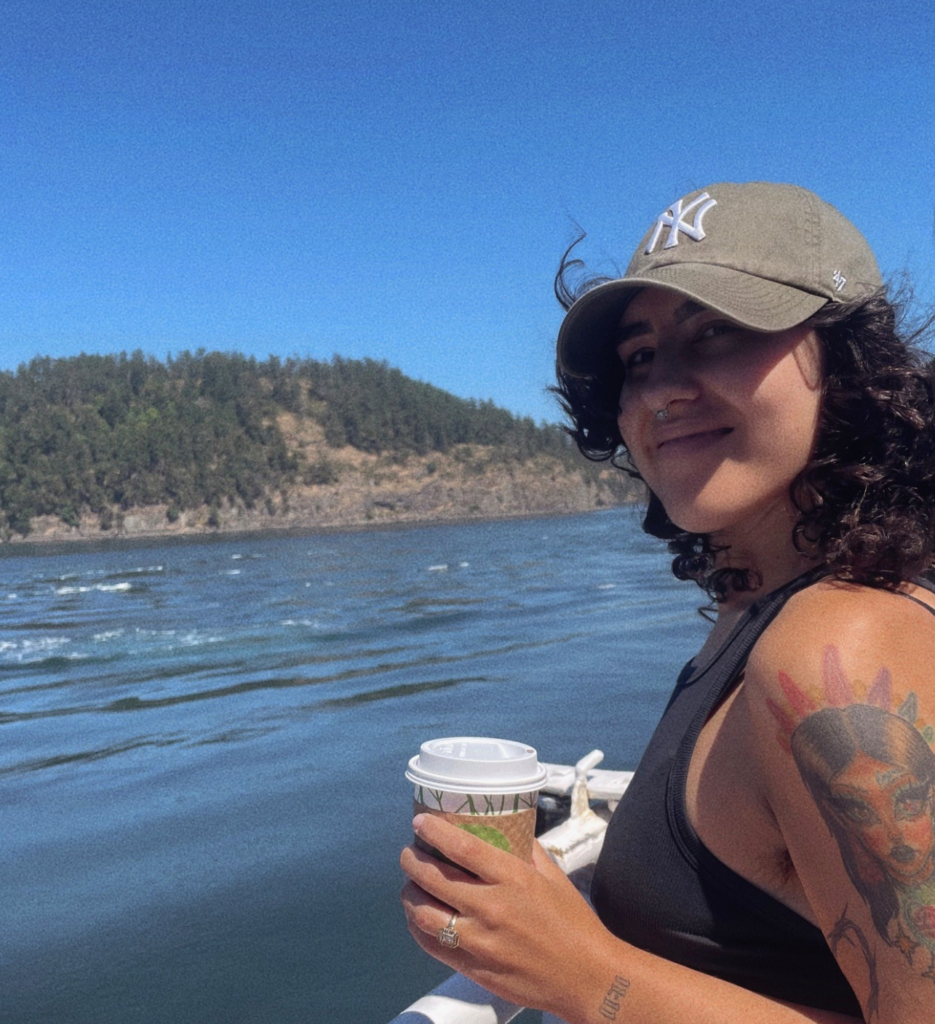When I reflect on my recovery journey with my eating disorder, I’m reminded of the many ups and downs that have brought me to where I am today—a place of healing, self-discovery, and hope. Opening up about my experience feels both daunting and deeply important; I want to share my story in the hope that it resonates with anyone out there who might be struggling.
My battle with eating disorders and body dysmorphia began at age 12 when puberty brought weight gain, and with it, a whirlwind of emotions, and I was placed into Weight Watchers at the recommendation of a doctor. I now recognize this proposed “solution” as misunderstanding and weight bias in the medical system. During this crucial period of development, Weight Watchers normalized my obsessive notation and anxiety surrounding food, exercise, and my body image. This narrative dominated my teen years and well into adulthood.
What I didn’t know then was that during those years, I was in the grips of an eating disorder—a fact overlooked by many of the medical professionals I turned to, despite the extreme measures I took. No one ever suggested that I might have a disordered relationship with food or exercise; because I existed in a larger body, my behaviors were dismissed, even encouraged.
At age 25, I had been battling an eating disorder for over a decade, and my mental health was at its lowest point. It was at this time that I turned to weight-loss surgery—a decision that would profoundly affect my life. The surgery took me down a path I was unprepared for, both mentally and physically. My body began to deteriorate, and I became more and more ill—but the most challenging part still was the mental toll. I had expected to feel joy and fulfillment, but instead, I was met with confusion, identity struggles, and deepening disordered eating behaviors.
I knew that there was something wrong, and just like the years leading up to my surgery, I was unable to find answers despite repeatedly trying to explain to medical professionals what I was experiencing. After countless trips to the doctor and inconclusive tests, it was discovered through an abdominal scan on my final visit to the emergency room that there was an infection caused by the surgery two years prior. It had spread from the surgical site and was impacting several other organs in my body. I was overwhelmed with both anger and relief when someone finally heard me, validating that I wasn’t imagining the pain all this time. It was in hindsight from a hospital bed at age 29 that I was finally diagnosed with an eating disorder.
As I worked through my recovery, a remarkable thing happened: the space in my mind that had been consumed by the voice of my eating disorder began to clear. This made room for self-discovery and acceptance, allowing me to embrace aspects of myself I’d long ignored, like my sexuality and my place within the queer community, as well as the space to have my ADHD formally diagnosed. Understanding these key pieces of my identity has been incredibly healing.
What I’ve learned is that understanding my eating disorder and letting go of guilt was the missing piece in my recovery. I came to realize that the decisions I made were driven by fear and desperation, not choice. I wasn’t alone in this battle, and neither are you.
I’m incredibly grateful for the second chance I’ve been given. I began volunteering with Looking Glass in 2021 and found purpose in a peer mentor role, as I’m confident that if someone had listened to me without judgment years ago, my path to recovery would have been different. But I refuse to let my experience be for nothing — I’ll continue to advocate for inclusive and accessible eating disorder care and do I all I can to contribute to creating spaces where all voices are heard, and recovery is within reach.
If you’re reading this and struggling, please know that there is light at the end of the tunnel. Recovery from an eating disorder is possible, no matter what stage you are at, and you deserve to find peace and joy in your life and in your body.

